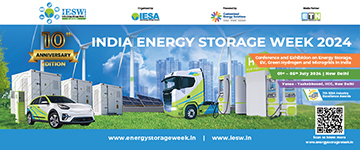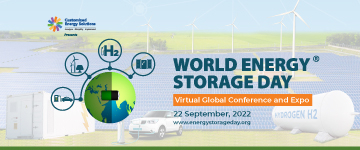Hydrogen: A step towards carbon-free economy
Hydrogen is gaining heightened interest globally as a strategic solution for advancing energy transition. While the potential of hydrogen in revolutionizing energy landscape is well known, let's examine how the latest wave of enthusiasm is different from the previous ones.
Total global energy demand is expected to increase by more than 50 percent by 2050. Ensuring that this growth is decarbonized will require the wide-scale deployment of multiple new technologies and business models. Among these, hydrogen, the most abundant and lightest element in the universe is set to play a significant role.
Globally, about 70 million tons of hydrogen is produced annually, with the majority used in the petrochemicals industry to either upgrade heavy oils to more valuable products or to produce ammonia-based fertilizers.
While some, mostly higher-purity, hydrogen is transported by truck or pipeline, almost 90 percent is 'captive', being produced at or next to its place of ultimate use either by dedicated production facilities or as a by-product of other processes such as the Chlor-alkali industry.
In the context of decarbonization, hydrogen is most often referred to by its 'color'. Most of the hydrogen used today is 'grey' meaning that it is produced from the reforming of natural gas without the capture of resultant CO2 emissions. Of most interest, however, is 'blue' and 'green' hydrogen. Green hydrogen is produced by the splitting (electrolysis) of water using renewable energy, or to a lesser degree, from other renewable sources such as reformation of bio-methane. Blue hydrogen, like its grey cousin, is also produced from fossil resources, however resultant CO2 emissions are captured for sequestration elsewhere. This CO2 abatement comes at a price, however, with additional costs coming from additional energy requirements and process complexity.
Old alternative sparks new interest
Since the 1960s, there have been several waves of enthusiasm for hydrogen. Every time, huge promises of hydrogen's potential to revolutionize the energy landscape were made. Each of these cycles saw significant investment in research and development, yet, apart from niche segments, commercialization has fallen flat. Why should things be different this time? Historically, much of the cost of generating electrolytic hydrogen has stemmed from embedded CAPEX costs of the electrolyzer and associated equipment. This has limited adoption to high-value or niche applications. Similarly, hydrogen fuel-cells have been cost-prohibitive compared to alternative energy-generating technologies.
Over the last decade, the landscape has changed dramatically, with costs of both electrolyzers and fuel-cells dropping below $1000 per kW. For hydrogen generation by electrolysis, this has shifted the cost burden from being dominated by fixed CAPEX costs to being governed by electricity prices. While carbon-heavy electricity from the grid can be used for electrolysis, this results in hydrogen with a high CO2 footprint. The availability of cheap, abundant renewable power has therefore been seen as the key to producing low-cost, green hydrogen at scale. With large-scale renewable power bids now setting records as low as ¢1.3 /kWh, that criterion is almost certain to be met.
Outlook for hydrogen
For many end-users of hydrogen, the outlook is especially bright with rapid improvements in efficiency, lifetime, and footprint of fuel-cells being rolled out by manufacturers such as Ballard who recently launched their 8th generation fuel-cell power module. The year 2019 came to be known as the 'year of the Gigawatt', with over 1 GW of fuel-cell capacity being shipped for the first time and this acceleration shows no signs of stopping. With further cost reductions of 70 percent predicted in the mid-term, the competitiveness of fuel-cells with alternative power-generation technologies will only grow. These developments have led to a recent spate of partnerships worth billions of dollars between fuel-cell manufacturers such as Plug Power and major corporations such as SK Group and Renault.
Advocates of blue hydrogen are often producers and users of natural gas who wish to transition their portfolio to cleaner energy, while leveraging existing assets and infrastructure. The United Arab Emirates has recently announced that it aims to become one of the world's lowest-cost producers of blue hydrogen, with the Abu Dhabi National Oil Co. planning to dramatically increase its carbon capture capabilities. The company already operates a demonstration facility at the Emirates Steel complex that captures 0.8 MtCO2 per year. In Europe, energy giant Equinor plans to commission Europe's first large-scale blue hydrogen facility in Northeast England by 2026.
With energy systems becoming increasingly complex, traditional approaches begin to break down 'at the borders', and new approaches are required. While energy and feedstocks for transport and industry have traditionally been viewed as separate entities, hydrogen is being increasingly seen as a 'convertible currency' between the two. Large-scale production of low-carbon hydrogen in one region and transportation to another is understood as a key enabler of a globalized energy transition.
The Asian Renewable Energy Hub in Western Australia aims to utilize solar and wind power to create hydrogen for export to Asia Pacific regions, while in New Zealand's South Island the potential of a large-scale, renewable hydrogen production facility is being explored. However, it should be noted that other projects such as the Latrobe Valley project in Australia will be producing 'black' hydrogen for export through the gasification of coal.
Scaling hydrogen application
With the potential for the trading and mixing of green, blue, grey, and black hydrogen products it is imperative that systems are in place to certify and track the origin and CO2 intensity of different hydrogen streams. In Europe, the CertifHy scheme is accrediting the first low-CO2 hydrogen produced under its mandate. Globally, however, much more needs to be done in this area due to the transnational nature of future hydrogen trade and the multiple sectors it can be deployed in.
The primary role of hydrogen in the energy transition has traditionally been viewed for the decarbonization of road transport. In recent years, however, an increasing number of players are advocating its deployment across the energy ecosystem and are developing technologies and business models to capitalize on that ambition. In response to the growing market potential and diversity of hydrogen applications, investment and partnering have grown rapidly, both from large corporations and from recently formed Venture Capital companies such as AP Ventures.
The year 2021 promises to be a defining year for the hydrogen sector. On land, the increasing roll-out of hydrogen trains and buses by Alstom and Wrightbus will continue to normalize hydrogen as an everyday mobility solution to commuters, while at sea the HyShip project aims to prove liquid hydrogen as a viable maritime fuel. In the US, UK, and Turkey, projects to blend hydrogen into the natural gas grid will expand, thus bringing hydrogen into residential settings. In the built environment, Tarmac and Hanson Cement are expected to release the results of their project to utilize hydrogen in cement production, while Tenaris will begin its project to use hydrogen to lower CO2 emission from steel production.
Call it a skeptic or optimist view, hydrogen is becoming a part of our lives and is here to stay.
[RHC IMZADI Consulting offers advisory services to organizations aiming to understand, grow and invest in the area of Hydrogen, Clean Energy and Innovation.]
(The views expressed in this article are the author's own)


















